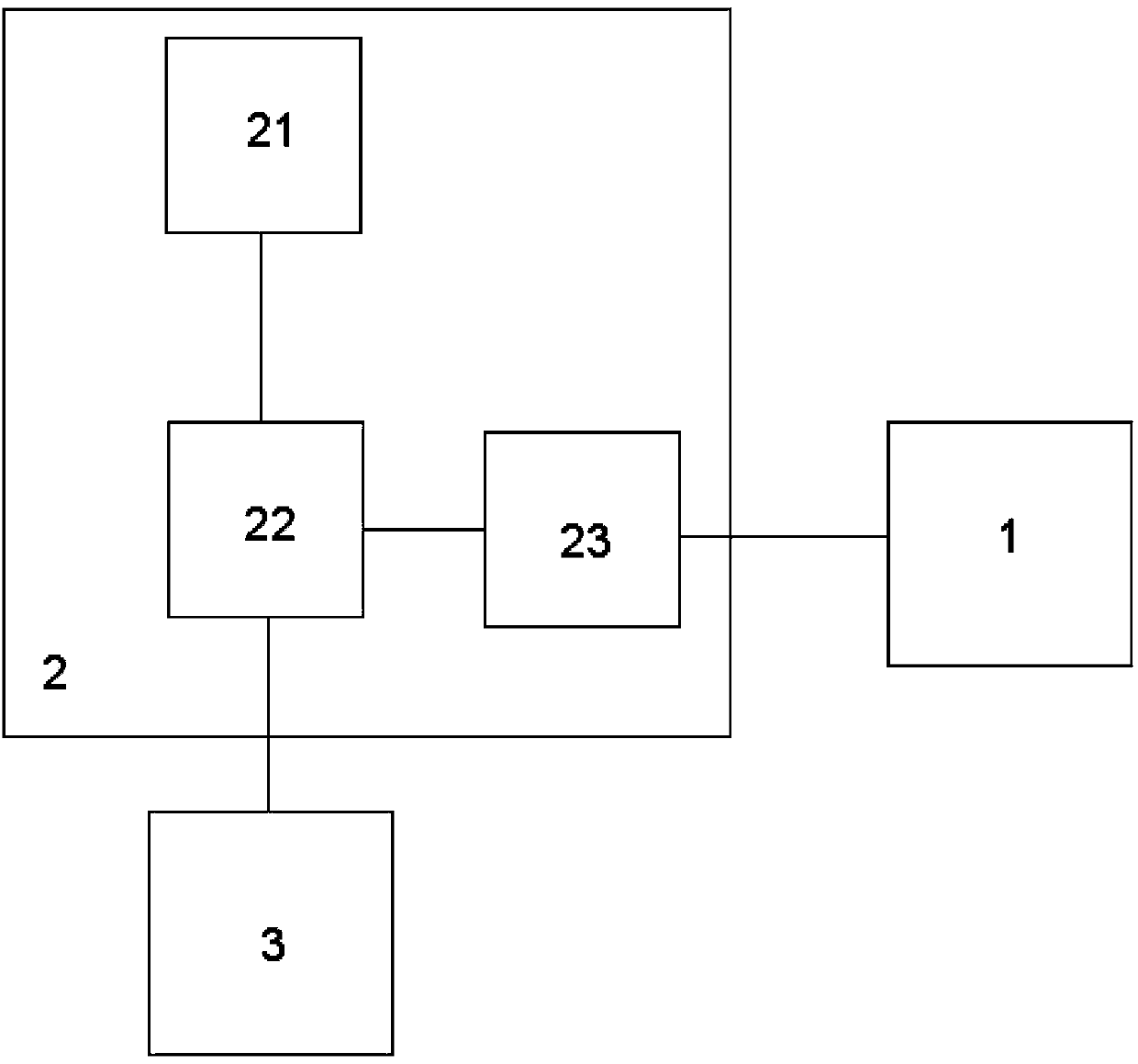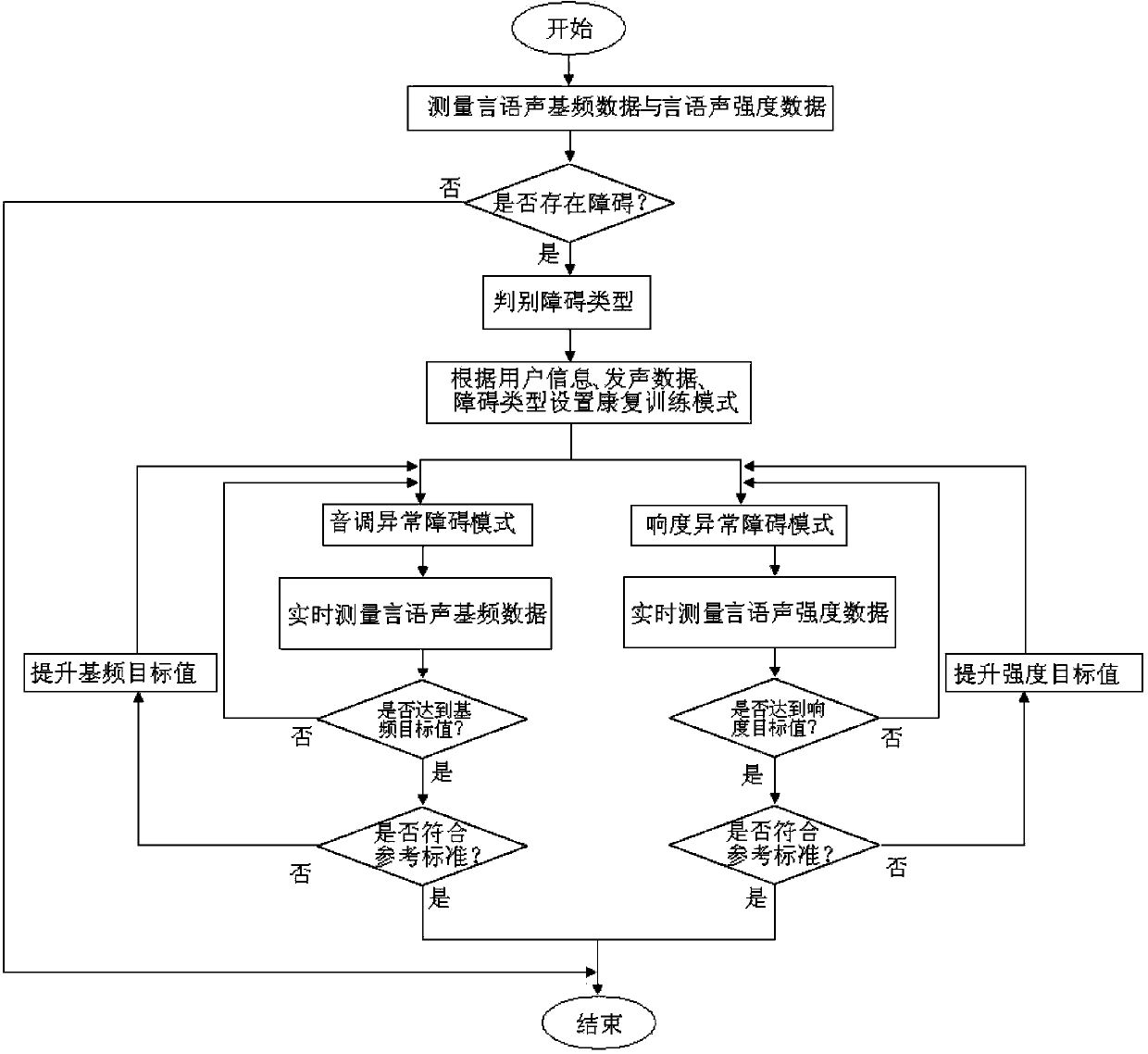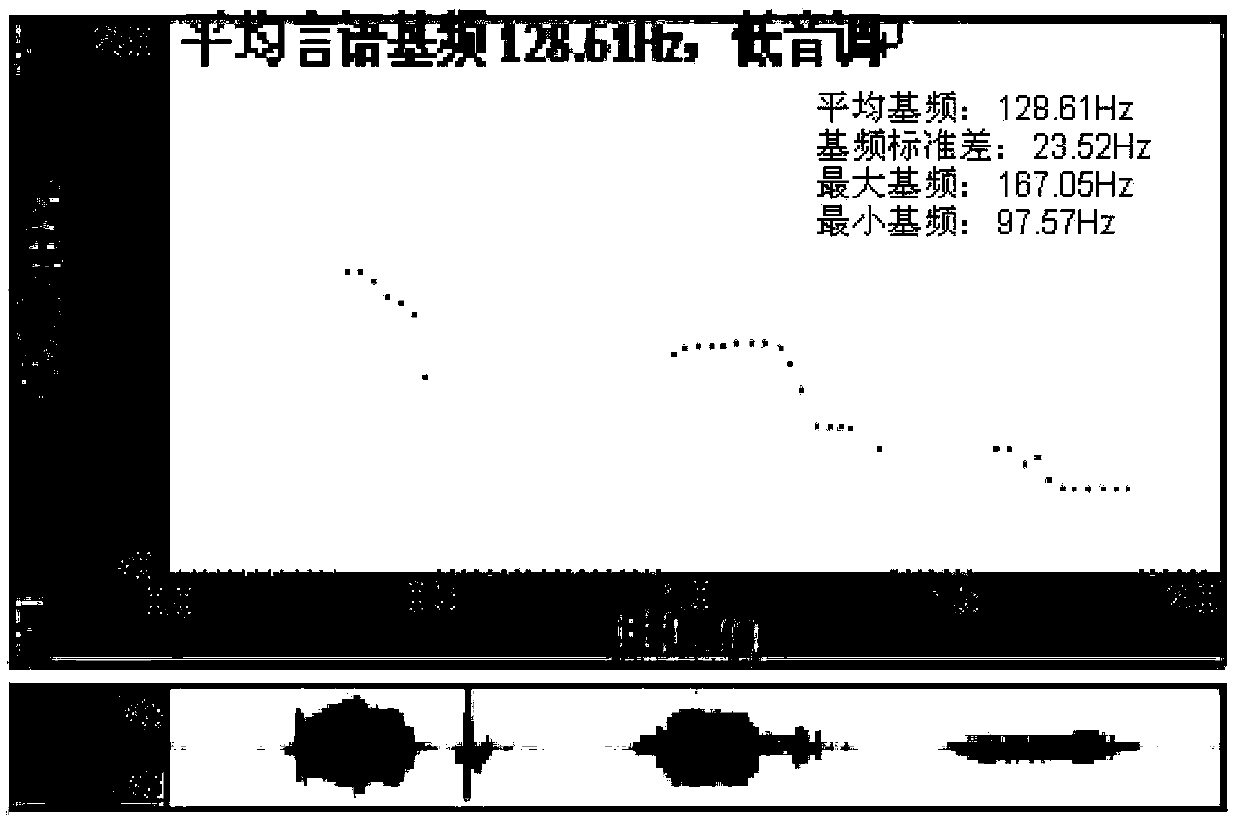Rehabilitation system and method based on real-time audio-visual feedback and promotion technology for speech production
A speech and audio-visual technology, applied in the field of rehabilitation system based on real-time audio-visual feedback and promotion technology of speech vocalization, can solve the problem that rehabilitation methods have not been reported in literature, and achieve the effect of promoting improvement and promoting vocalization function.
- Summary
- Abstract
- Description
- Claims
- Application Information
AI Technical Summary
Problems solved by technology
Method used
Image
Examples
Embodiment 1
[0059] Example 1: Discrimination of the type of dysphonia
[0060] Before implementing the rehabilitation method of the present invention, the type of dysphonia is firstly discriminated. Such as image 3 and Figure 4 As shown, after the user takes a deep breath, the real-time measurement unit 1 is pronounced, and the real-time measurement unit 1 collects the user's speech sound in the speaking process, and the real-time measurement unit 1 automatically extracts the user's speech fundamental frequency data (such as image 3 ), speech intensity data (such as Figure 4 ).
[0061] The real-time measurement unit 1 sends the measured results (for example, speech fundamental frequency data, speech intensity data) to the real-time discrimination module 23 in the main control unit 2, and the real-time discrimination module 2 is based on user information (for example, user's age, Gender) is automatically compared with reference standards of the same age and gender (as shown in Tab...
Embodiment 2
[0065] Embodiment 2: Rehabilitation method for dysphonia disorder
[0066] The rehabilitation execution module 22 sets the rehabilitation mode according to the user information and the obstacle type information in Embodiment 1. The rehabilitation execution module 22 sets the rehabilitation mode as the abnormal tone disorder mode, and selects the promotion treatment for the abnormal tone. In the abnormal tone disorder mode, the real-time discrimination module 23 compares the fundamental frequency data of the user's voice measured by the real-time measurement unit 1 with the fundamental frequency data of the speech voice in the reference standard, and generates a discrimination result. The rehabilitation execution module 22 executes the rehabilitation mode content according to the judgment result, and sends the execution result to the real-time audio-visual feedback unit 3 for display.
[0067] The abnormal pitch obstacle mode is executed in the following steps:
[0068] Step 1...
Embodiment 3
[0073] Embodiment 3: Rehabilitation method for abnormal loudness disorder
[0074] The rehabilitation execution module 22 sets the rehabilitation mode according to the user information and the obstacle type information in Embodiment 1, and the rehabilitation execution module 22 sets the rehabilitation mode as the abnormal loudness obstacle mode. In the abnormal loudness obstacle mode, the real-time discrimination module 23 compares the speech intensity data of the user measured by the measuring unit 1 with the speech intensity data in the reference standard, and generates a discrimination result. The rehabilitation execution module 22 executes the rehabilitation mode content according to the judgment result, and sends the execution result to the real-time audio-visual feedback unit 3 for display.
[0075] Loudness abnormal obstacle mode is executed as follows:
[0076] Step 1: The rehabilitation execution module 22 sets the rehabilitation mode to the abnormal loudness obstacl...
PUM
 Login to View More
Login to View More Abstract
Description
Claims
Application Information
 Login to View More
Login to View More - R&D
- Intellectual Property
- Life Sciences
- Materials
- Tech Scout
- Unparalleled Data Quality
- Higher Quality Content
- 60% Fewer Hallucinations
Browse by: Latest US Patents, China's latest patents, Technical Efficacy Thesaurus, Application Domain, Technology Topic, Popular Technical Reports.
© 2025 PatSnap. All rights reserved.Legal|Privacy policy|Modern Slavery Act Transparency Statement|Sitemap|About US| Contact US: help@patsnap.com



